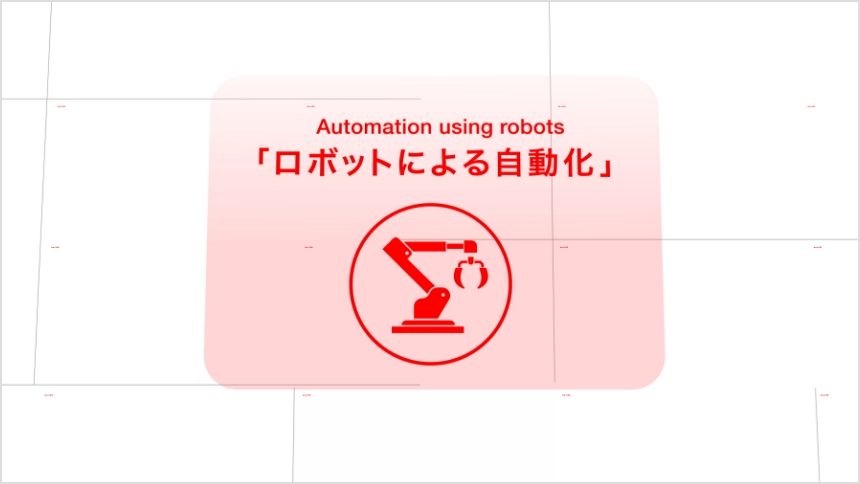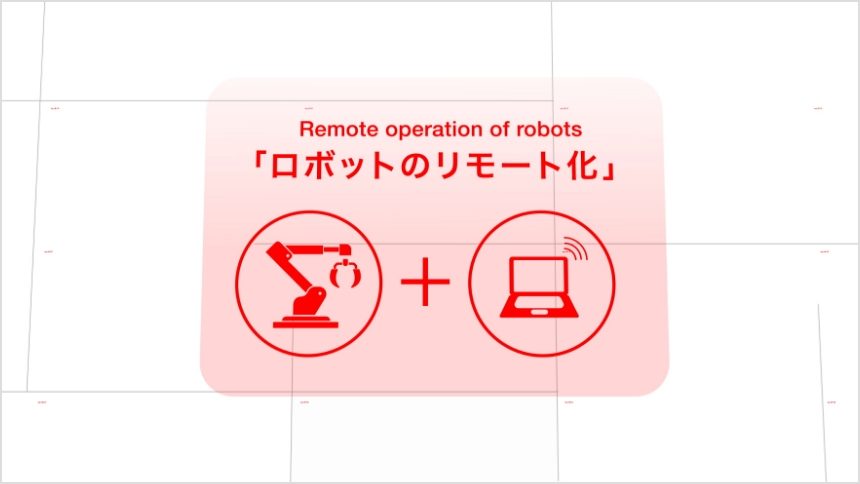Remote work has expanded rapidly due to the COVID-19 pandemic, and it has taken root as a new working style. By combining robots and remote communication technology, we are converting on-site work that is difficult to execute without human presence, in fields such as manufacturing, medicine, and services, to remote work through robotic remote control. This is an introduction of the image of a safe and secure remotely-connected society envisioned by Kawasaki.
Solving future labor shortages with robots
In Japan, it is said that the decline of the working population will become a serious problem as the aging of the population progresses. There is particular concern about the reduction in people to perform work in dangerous workplaces and work that puts a physical burden on the worker.
Kawasaki has included “A Safe and Secure Remotely-Connected Society” as part of the future vision for 2030 in our Group Vision 2030. As a fully-integrated robot manufacturer, we will propose solutions to society that utilize robots.
What is “A Safe and Secure Remotely-Connected Society”?
Advances in technology have made it possible to conduct a lot of office work remotely. However, there are still a lot of workplaces where the work is performed by human hands, such as in manufacturing and medical care workplaces, and this work restricts the possibilities for diverse ways of working.
Bringing freedom and diversity to all workplaces in Japan…
Using robots to enable workplace jobs to be performed remotely can bring safety and security to the people currently working in those workplaces. That is the “Safe and Secure Remotely-Connected Society” that Kawasaki is aiming for.
Two approaches to a safe and secure remotely-connected society
01. Automation using robots

Using robots to perform tasks that have previously been performed by humans makes it possible to remotely perform work that is hard, dirty and dangerous.
02. The remote operation of robots

Site works can be performed remotely by operating robots remotely. This relaxes constraints related to physical capabilities and age and enables a diverse range of human resources to participate in the labor force.
Laparoscopic surgery that is easy on the patient
SMedicaroid Corporation was established in 2013 as a joint venture between Kawasaki, which has a great variety of technology and expertise accumulated since starting the production of Japan’s first industrial robot in 1969, and Sysmex, which has technology in testing and diagnosis and an extensive network in the medical sector. We developed the “hinotori™ Surgical Robot System” as Japan’s first robotic system to assist surgery.
Kawasaki Robotics supporting the era of living “With COVID-19”
Conventionally, PCR testing has been conducted manually by medical personnel. In addition to this posing a risk of infection to the medical personnel performing the work, there were also cases where the need for human resources to conduct the testing puts pressure on the workplace. By automating the series of tasks in the testing, the risk of infection to the medical personnel is reduced and it also becomes possible to accurately perform a large number of tests.
Interview with the top management of Remote Robotics
On December 1, 2021, Kawasaki Heavy Industries and the Sony Group started the business operation of “Remote Robotics Inc.”, which is a new joint venture in remote robotics platform business. The company aims to realize a remotely-connected society that enables every person to participate in society and plans to propose a new safe and secure work style through remote robotics platforms. We spoke to the company President and CEO Hirokazu Tanaka and Executive Vice President and COO Shogo Hasegawa about the future of Remote Robotics.
Related Link
- [A Safe and Secure Remotely-Connected Society]Laparoscopic surgery that is easy on the patient
- [A Safe and Secure Remotely-Connected Society]Kawasaki Robotics supporting the era of living “With COVID-19”
- [A Safe and Secure Remotely-Connected Society]Interview with the top management of Remote Robotics